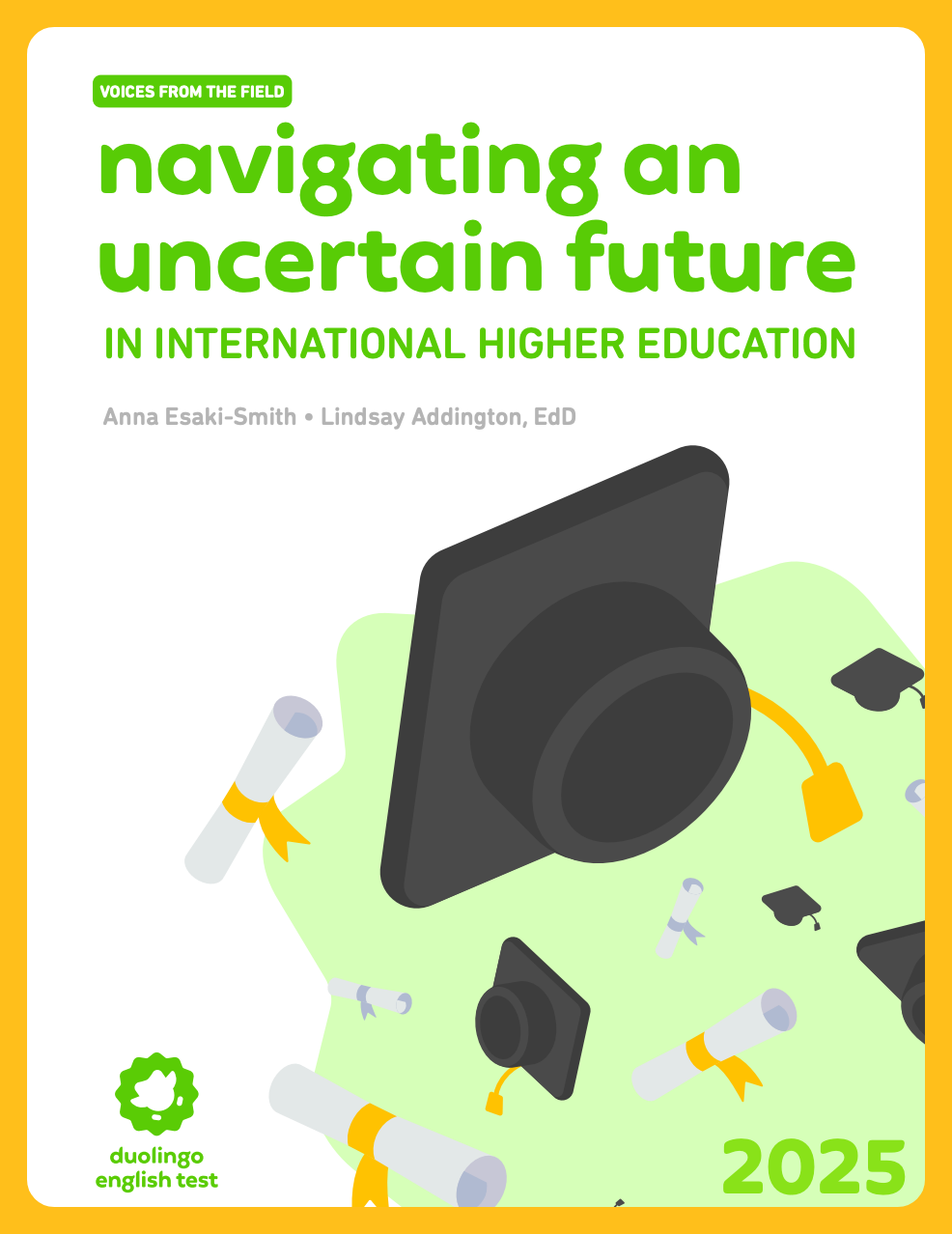The long-held belief that studying abroad leads to bigger and better opportunities is being questioned—and those of us involved in international higher education, whether it be recruitment, enrollment management or programming, are feeling the pressure. Students are anxious, governments are tamping down on immigration and society isn’t always paying attention.
With disruptions occurring literally day by day, it might feel like there’s nothing much you can do to prepare for the future. That simply absorbing the shocks is the only way forward. In such a competitive global landscape, is there anything institutions can do to gain traction?
In our latest report, Voices from the Field: Navigating an Uncertain Future in International Higher Education, we explore insights from experts in higher education across major Anglophone countries as well as in demographics, youth trends and economic policy.
Here are three key takeaways:
1. Students are rethinking everything
One thing is for sure—international students are paying close attention. They’ve seen visa policy change radically overnight. They’ve heard politicians say one thing one month, and something completely different the next. Uncertainty is the new normal, and it’s making students rethink the value proposition that study abroad traditionally has provided.
As a result, some students are skipping over traditional destinations like the U.S. or the U.K. and looking elsewhere—Germany, Spain, even places like the UAE and the Netherlands. It’s no longer just about brand-name universities. It’s about clarity: Will I be allowed to stay and work? Can I bring my family? Is this country welcoming?
In a world full of choices, the host destinations offering not just prestige, but stability, could emerge stronger by becoming more appealing and reliable choices for international students.
2. Policies in major Anglophone destinations will limit student numbers
International students are considered a plus for most countries: they spend money, support universities and programs, and often join the local workforce via post-study work schemes. But in today’s political climate, many governments are walking a tightrope: On one side, the economic benefits that this global cohort brings; on the other, rising concerns about declining public sentiment towards immigration.
Canada introduced a cap on international students in 2024, saying the system needs a reset. Australia tightened its policy and significantly raised visa fees. The U.K. is aiming to shorten its post-study work scheme after having restricted most graduate students from bringing dependents on their visas. And while the legal status of international students in the U.S. remains uncertain, moves the federal government has made to limit their access to visas, combined with its unwelcoming rhetoric, are likely to discourage many from going there to study.
Amid this muddled environment, one thing is clear: If countries are to stay competitive, they need more than globally-recognized universities—they need consistent visa and post-study work policies that are stable enough to be attractive to future cohorts of international students.
3. Universities need to meet students closer to home
Many universities rely on international tuition to balance their budgets. But even before this current period of turbulence, as costs rose and non-traditional study destinations proliferated, international students had been demanding more tangible evidence of the value of an overseas university degree.
Now, shifting national policies are erecting unprecedented barriers to enrollment, discouraging students even further from studying abroad. As a result, countries that offer post-study work pathways and stable visa policies are gaining ground. Lower tuition fees in emerging host countries are another big draw for students.
In order to stay competitive, universities in major Anglophone destinations must adapt. Many are expanding transnational education (TNE) offerings, by opening branch campuses abroad, partnering with local institutions, and investing in online or hybrid delivery models. These moves aim to address student needs by reducing costs and helping them circumvent visa and political barriers.
Alternatives to bringing students on campus—once seen as secondary to international recruitment—are now a strategic priority, as universities work to maintain global reach without relying solely on cross-border mobility.
Build trust and resilience by practicing adaptive leadership
Students are still eager to study overseas, but their destination decisions are more complex than ever. Safety, affordability, immigration policies, and post-graduation opportunities now weigh just as heavily as university rankings. The appetite for international education hasn’t diminished—it’s been recalibrated. The question isn’t if students will go abroad, but where they’ll feel most welcomed and supported.
In an era marked by rapid change and global uncertainty, collaboration and open dialogue are more important than ever. By sharing knowledge and providing guidance, we hope to strengthen ties within the international education community and help forge a path to a more sustainable future.
Our goal is to develop a more resilient and forward-looking international education sector. Through collective insight and shared best practices, we can support institutions and students in navigating the challenges ahead.

